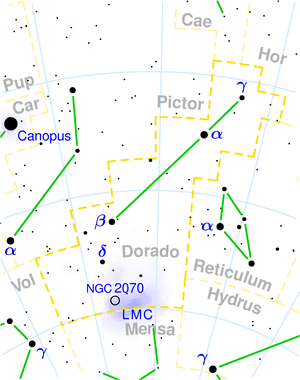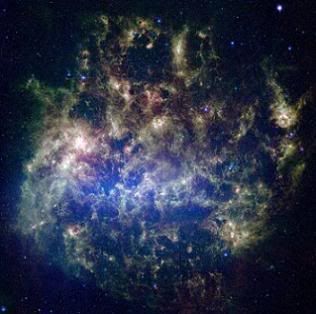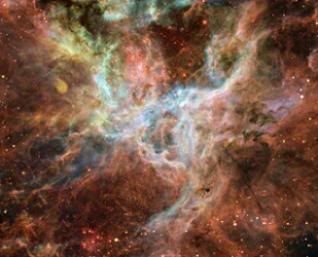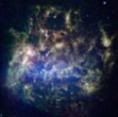Post by glactus on Feb 17, 2008 8:37:05 GMT

Dorado It is a southern constellation also known as Xiphias or the Sword-fish. It is notable for containing most of the Large Magellanic Cloud, the remainder being in the constellation Mensa. The South Ecliptic Pole also lies within this constellation.

The large Magellanic cloud
The large Magellanic cloud is a dwarf galaxy that orbits the Milky Way, is at a distance from us of 160,000 light years, and together with its apparent neighbor and relative, the Small Magellanic Cloud, are conspicuous objects in the southern hemisphere, looking like separated pieces of the Milky Way for the naked eye.
Main stars:
S Dor 9.721 – hypergiant in the Large
Magellanic Cloud, S Dor is a variable prototype.
Supernova 1987A is the closest supernova since the invention of the telescope.
The variable star R Doradus 5.73 – has the largest known size of any star.
HE 0437-549, a hypervelocity star escaping from the Milky Way/Magellanic Cloud system.
Notable deep sky objects
Because Dorado contains part of the Large Magellanic Cloud, it is rich in deep sky objects. There are at least sixteen open and globula clusters, the galaxy NGC 1566, as well as the famous tarantula nebula NGC 2070,

The Famous tarantula nebula
The Tarantula Nebula is more than 1000 light-years across - a giant emission nebula. This glowing cloud of gas and dust is one of the most dynamic star-forming regions in our local group of galaxies. It harbors some of the most massive stars in the universe, up to 100 times more massive than our own Sun, and is the only nebula outside our galaxy visible to the naked eye. Distance from us is 180,000 light years.

NGC 1566
NGC 1566 is an active galaxy of the Seyfert type. Active galaxies are less energetic cousins of the quasars.These spiral galaxies have a compact, very bright nucleus whose energy fluctuates very quickly, like that of a quasar, indicating a small size. Seyfert galaxies contain gas clouds that move at about 10,000 km per second, (36 million km per hour). NGC 1566 It is a long way away from us at 60 million light years.

magellanic
credits:
text and magellanic image - Wikipedia
en.wikipedia.org/wiki/NGC_2070
Image NGC 1566 - spitzer.
en.wikipedia.org/wiki/NGC_1566
image: the tarantula nebula - ESA science and technology
sci.esa.int/.../object/index.cfm?fobjectid=36225


